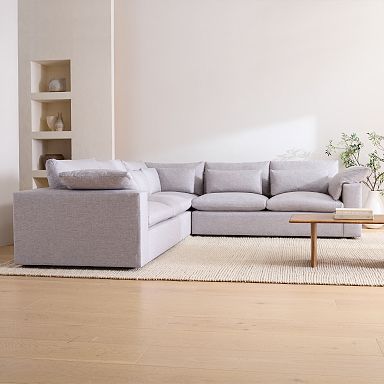Understanding Interior Design Harmony
Interior design harmony is about creating a balance that feels just right within a space. It’s not just about aesthetics; it’s about how the elements in a room work together to create a cohesive environment where one can feel relaxed and inspired. In my journey of interior design, I’ve learned that achieving this harmony, especially in modular design, can transform any area into a welcoming haven.
The Modular Look: What is it?
Modular design is an innovative approach that focuses on the use of prefabricated units or components, making it adaptable and often more efficient than traditional methods. Whether you’re designing a compact apartment, a spacious home, or a commercial space, modular units allow for flexibility and personalization.
Benefits of Modular Interior Design
1. Flexibility and Adaptability
One of the key benefits of modular design is its adaptability. You can easily rearrange furniture or components to fit different occasions or needs without sacrificing style.
2. Efficient Use of Space
Modular units are designed to maximize the use of available space, which is particularly valuable in small living areas.
3. Cost-Effectiveness
Often, modular furniture can be more cost-effective than bespoke pieces, allowing you to invest in quality while keeping to a budget.
4. Eco-Friendly Options
With the rise of eco-awareness, many modular designs utilize sustainable materials and processes, reducing environmental impact.
Comparative Benefits of Modular Design vs. Traditional Design
| Feature | Modular Design | Traditional Design |
|---|---|---|
| Customization | High | Medium |
| Cost | Lower | Higher |
| Installation Time | Quick | Long |
| Environmental Impact | Lower | Higher |
Creating Harmony in Modular Designs
Creating harmony in modular design requires a nuanced approach. Here are some essential tips based on my experiences:
1. Choose a Color Scheme
Start by selecting a color palette that reflects your personality and sets the mood you want to evoke. Harmonious colors can make a space feel cohesive and intentional.
2. Balance Textures and Patterns
Incorporate various textures and patterns to add depth. A good mix, such as soft fabrics combined with sleek surfaces, can bring a dynamic yet harmonious feel to your space.
3. Functional Layout
Ensure that your modular pieces are not just aesthetically pleasing but also practical. The arrangement should facilitate movement and enhance the functional use of the space.
4. Layering Lighting
Layer your lighting with ambient, task, and accent lights to create depth and warmth. This not only adds to the aesthetic but also enhances the mood of the room.
Styles of Modular Interior Design
1. Minimalist Modular Design
This style emphasizes simplicity and functionality, making it perfect for small spaces. With clean lines and a limited color palette, it creates an uncluttered look.
2. Contemporary Modular Design
Contemporary designs often use bold colors and materials like glass and metal, creating an energetic ambiance. This style is about being current and fresh.
3. Scandinavian Modular Design
Nordic designs focus on natural elements, with wood and soft textiles dominating. The result is a cozy environment that feels both welcoming and stylish.
4. Industrial Modular Design
Characterized by exposed structures and raw materials, industrial design can add an edgy feel to your spaces. This style pairs well with modular furniture that reflects its rugged appeal.

Pros and Cons of Modular Interior Design
Pros
- Highly customizable to fit personal needs.
- Space-efficient, making it ideal for small homes.
- Generally more affordable than custom-built options.
- Easy to relocate or change configurations.
Cons
- May lack the unique charm of bespoke designs.
- Quality can vary significantly between brands.
- Some pieces may not be as durable as traditional furniture.
Real-Life Examples of Modular Harmony
In my own home, I embraced the power of modular design to create a harmonious living space. I used modular sofas, allowing me to rearrange them for gatherings or quiet evenings. Additionally, I integrated modular shelving that not only serves a practical purpose but also displays personal treasures, maintaining aesthetic harmony.
Another fantastic example was a friend’s small apartment that used modular furniture to create a multifunctional living space. Her use of a modular dining table that expanded for guests showcased the versatility of modular design while maintaining a cohesive look with her color scheme and textures.

FAQs About Interior Design Harmony and Modular Look Books
What is an interior design look book?
An interior design look book is a curated collection of images, materials, and ideas that showcase design concepts and styles, helping to visualize the overall aesthetic and harmony of a space.
How do I create a modular look book?
Begin by gathering images of modular designs you love, along with samples of fabrics and colors. Organize them by style or function, and don’t forget to include your written thoughts and inspirations.
Can modular furniture fit in any style of home?
Yes! Modular furniture can be designed to fit various styles, from modern to rustic, making it a versatile choice for any home.
Is modular design sustainable?
Many modular designs are sustainable as they often utilize eco-friendly materials and processes. It’s essential to research brands and their practices to find those that prioritize sustainability.